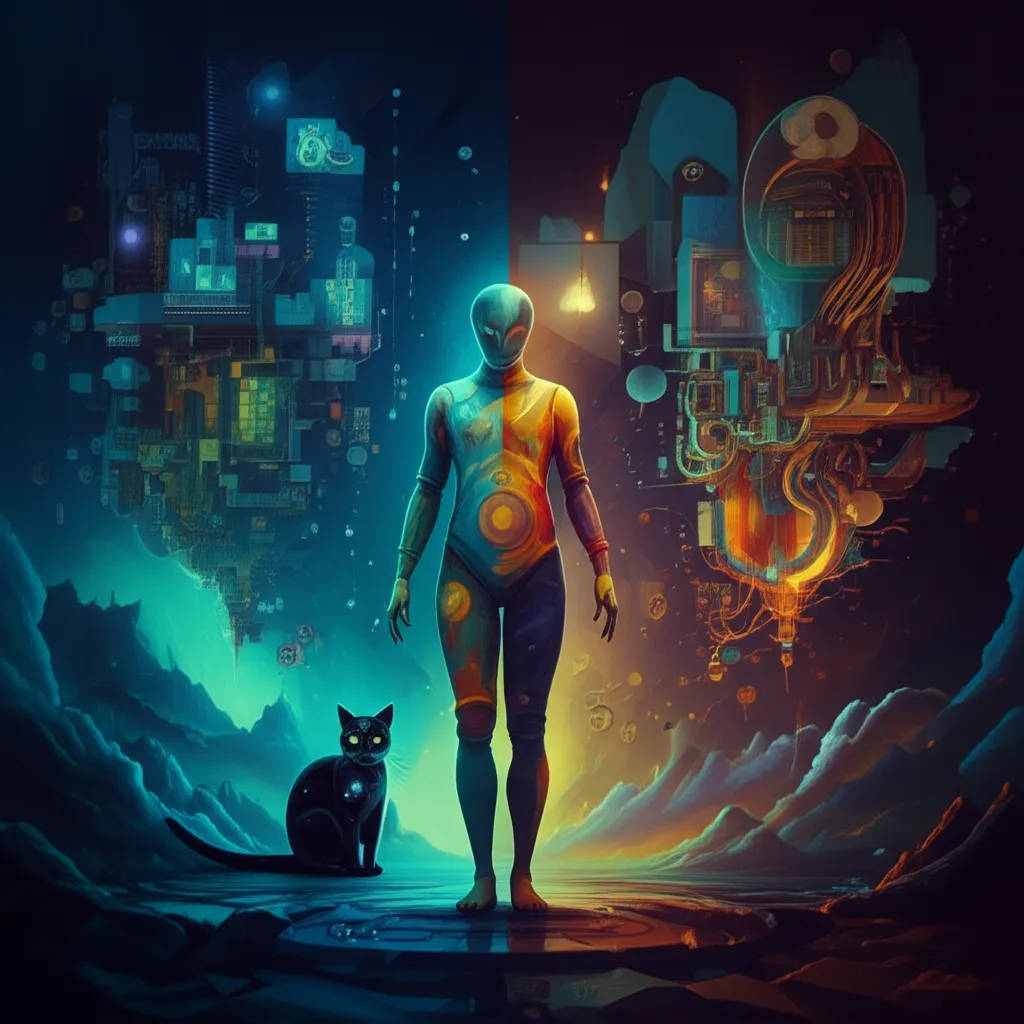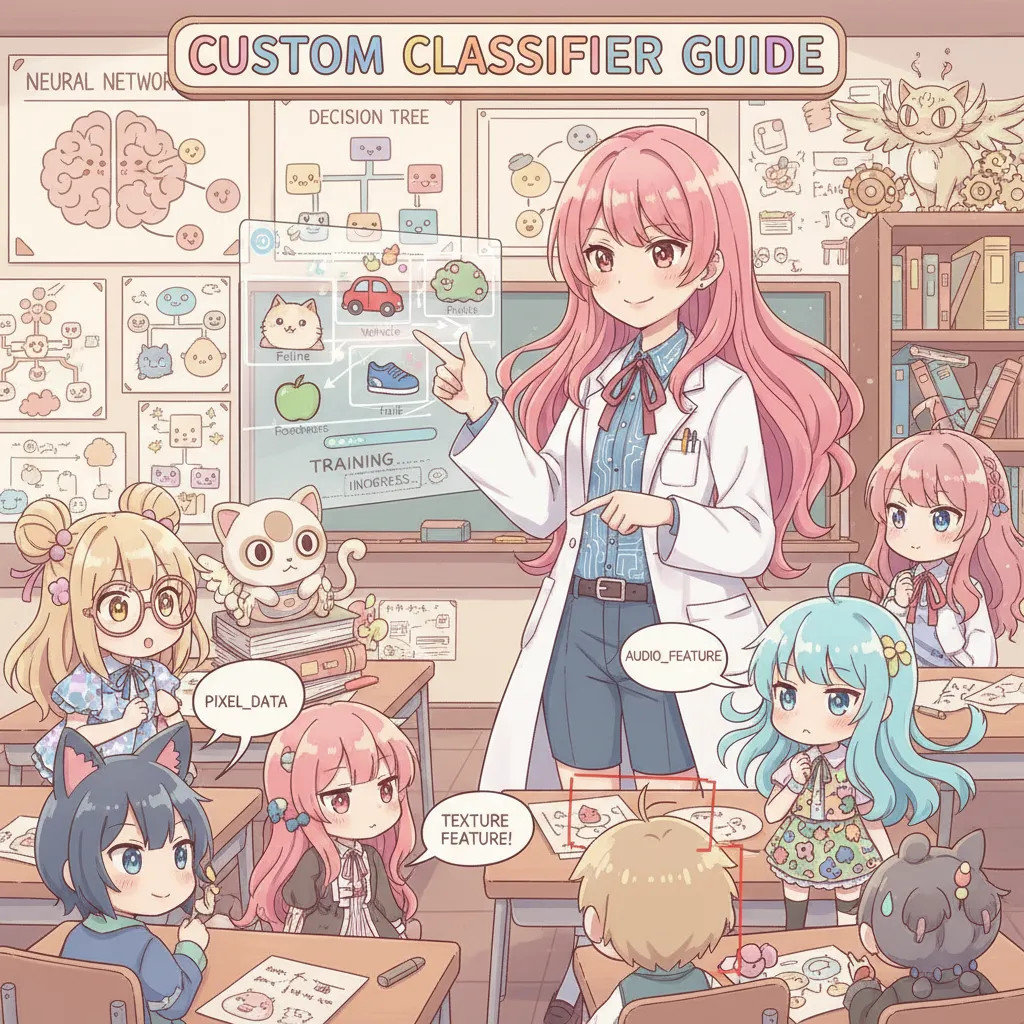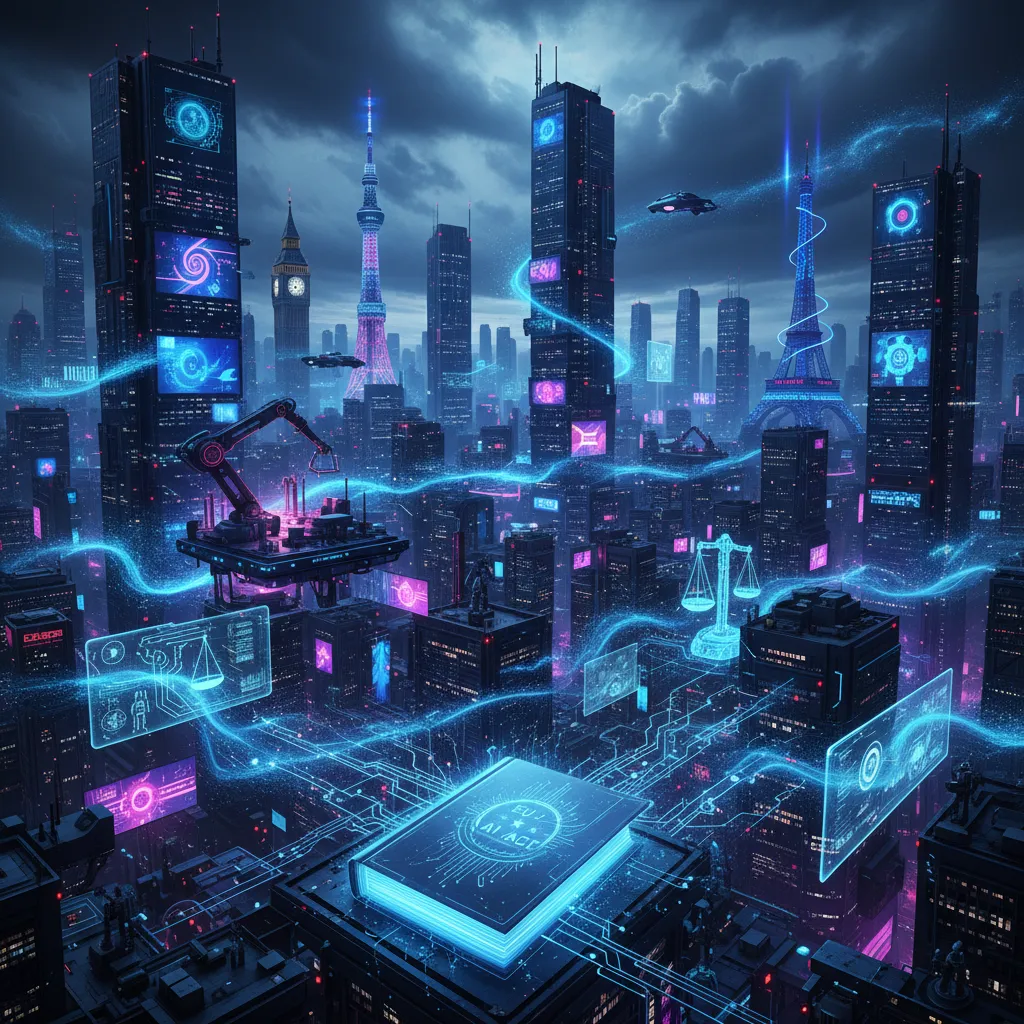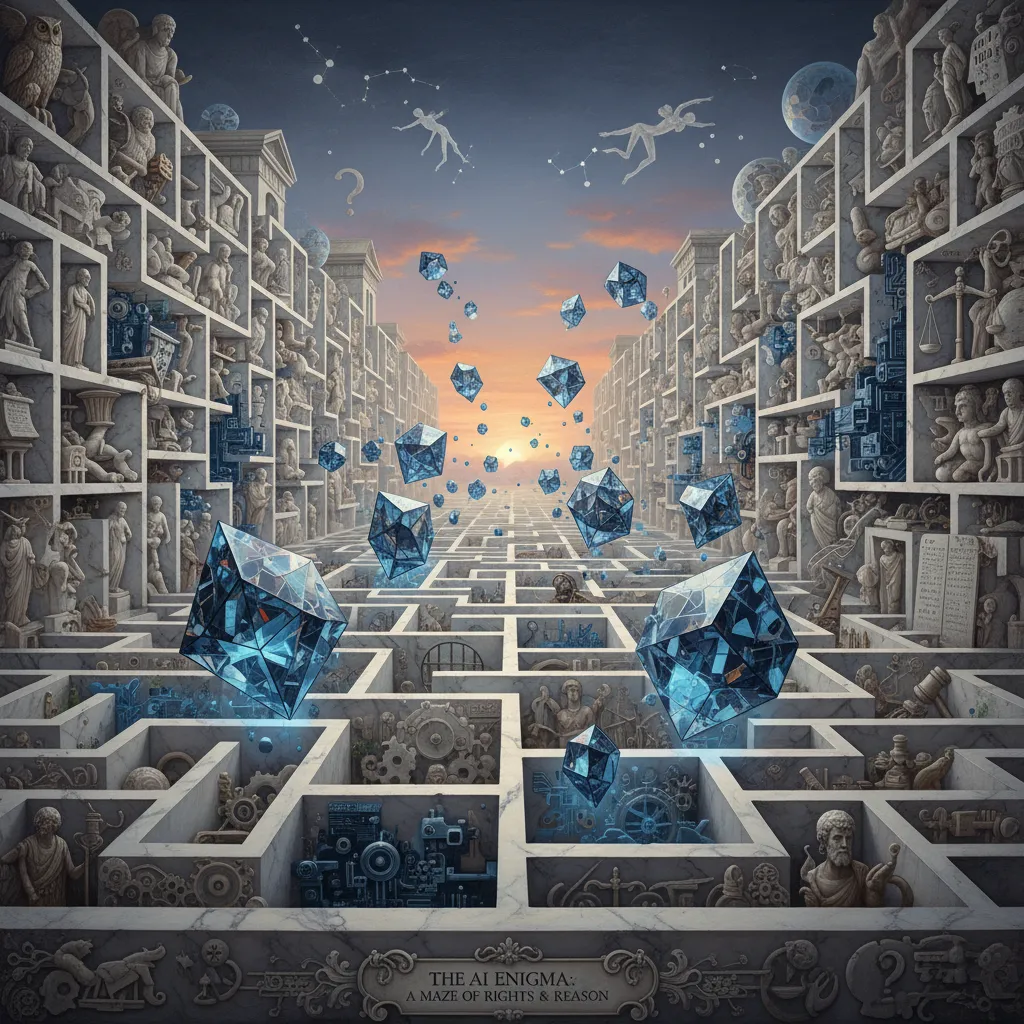A few years ago, my friend Bob, who can barely program his coffee machine, asked me to explain how machines 'learn' to recognize his cat in photos. That question sent me down a rabbit hole—and what I found was both stranger and simpler than I expected. In this post, you'll meet Bob (and his furry cat, Sir Whiskers), learn why some AI needs a wise teacher while others thrive in wild chaos, and maybe, just maybe, see your own daily routines in a whole new light.
Bob, His Cat, and the Mystery of Labeled Data (Supervised Learning Explained Simply)
Let me introduce you to my friend Bob. Bob is a cat lover and, like many pet owners, he has a photo album filled with snapshots of his feline companion. But Bob takes it a step further. Every photo in his album is carefully labeled—“Whiskers sleeping,” “Whiskers playing,” “Whiskers eating.” This simple act of labeling is at the heart of what we call supervised learning in artificial intelligence.
Supervised learning is a method where machines learn from examples that are already sorted and explained by humans. Think of it as teaching a child with flashcards. You show a card with a picture of an apple, and you say, “This is an apple.” The child gets a clear hint. Over time, with enough examples, the child learns to recognize apples, even in new pictures. Machines learn the same way—by being fed labeled data, just like Bob’s photo album.
In the world of AI, labeled data means each piece of information comes with an answer attached. In Bob’s case, every cat photo has a tag that tells the machine exactly what’s happening. This is what makes supervised learning so powerful. The machine isn’t left guessing; it gets direct feedback on what’s correct and what’s not.
Research shows that supervised learning is the backbone of many technologies we use daily. For example:
Email spam filters: These systems are trained on thousands of emails labeled as “spam” or “not spam.” The machine learns patterns that separate junk mail from important messages.
House price prediction: By analyzing past sales data—where each house is labeled with its selling price—AI models can predict what a new house might sell for.
Sentiment analysis: Tools that scan product reviews or social media posts to determine if the text is positive, negative, or neutral rely on vast datasets where each entry is tagged with its sentiment.
What’s important to understand is that supervised learning requires a lot of human effort upfront. Someone has to label all that data, whether it’s photos of cats, emails, or houses. This makes the process resource-intensive, but it also means the resulting models are often highly accurate for specific tasks. As studies indicate, supervised learning is especially effective when the goal is clear and the data is well-organized.
To put it simply, supervised learning is about giving machines a head start. We, as humans, provide the answers first, so the machine can learn the rules. As one expert puts it,
“Supervised learning is like having a teacher guide you through every step, making sure you know exactly what’s right and what’s wrong.”
This guidance is what sets supervised learning apart from other methods, and it’s why it’s so widely used in everything from voice assistants to fraud detection systems.
Unsupervised Chaos: How AI Becomes a Data Detective (Unsupervised Learning Overview)
Imagine handing my friend Bob a box filled with hundreds of random photos. There are no labels, no captions, no clues—just a jumble of images. I tell Bob, “Go ahead, find the hidden story.” That’s the essence of unsupervised learning in artificial intelligence. There’s no guiding hand, no teacher pointing out what’s what. The AI is left to make sense of the chaos on its own.
In the world of machine learning, unsupervised learning is all about discovering patterns in data without any labels. Unlike supervised learning, where the machine is given clear examples—like “this is a cat” or “this is a dog”—unsupervised learning is more like detective work. The AI must sift through mountains of information, looking for similarities, differences, and hidden relationships. As research shows, this approach is especially useful when you have lots of data but little context or annotation.
So, what does this look like in practice? Think about a business with thousands of customer records. Nobody has sorted these customers into neat categories. Unsupervised learning algorithms step in to group customers based on their behaviors, preferences, or purchase histories. This is called clustering. The AI might notice that certain customers always buy cat food, while others prefer dog toys. Suddenly, the business has actionable insights—without anyone ever telling the AI what to look for.
Another classic example is anomaly detection. Imagine a bank monitoring millions of transactions. Most are routine, but a few are suspicious. Unsupervised learning can flag transactions that don’t fit the usual patterns, helping analysts spot potential fraud. As studies indicate, this kind of pattern recognition is where unsupervised learning shines.
But there’s a trade-off. Unsupervised learning isn’t great at predicting specific answers. If I ask Bob, “Is this a photo of your cat?” he won’t know for sure. He can only tell me which photos look similar or which ones seem out of place. That’s why unsupervised learning is perfect for clustering data, finding associations, and reducing the complexity of large datasets—but not for tasks like predicting tomorrow’s weather or identifying the sentiment of a tweet.
Here’s the key: unsupervised learning works independently, without human intervention. It’s like setting a detective loose in a city with no map and no instructions, just a hunch that there’s a story waiting to be uncovered. As the field evolves, researchers are finding new ways to combine unsupervised methods with supervised learning, creating hybrid models that balance exploration with precision.
In summary, unsupervised learning is about letting the AI become a data detective. It hunts for patterns, groups, and oddities, making sense of the unknown. There are no labels—just chaos, curiosity, and the thrill of discovery.
Flashcards vs. Detective Hats: Key Differences and Why You Need Both
When I first tried to explain the difference between supervised and unsupervised learning to my friend Bob, I reached for the simplest metaphors I could find. Imagine supervised learning as studying with flashcards. You have a question on one side and the correct answer on the other. Every time you practice, you know exactly what you’re aiming for. Unsupervised learning, on the other hand, is like putting on a detective hat and searching for patterns where there are no obvious clues. You don’t know what you’re looking for until you find it.
Supervised learning is all about right answers. You feed the machine a set of labeled examples—like “this is a cat,” “this is not a cat”—and the machine learns to recognize those labels in new data. It’s straightforward, but it requires a lot of human effort upfront. Someone has to create all those flashcards, so to speak, by labeling the data. Research shows that supervised learning is the backbone of many everyday AI applications, from voice assistants that understand your commands to spam filters that keep your inbox clean.
Unsupervised learning is a different beast. Here, the machine gets a pile of data with no labels. It’s up to the algorithm to find structure, groupings, or patterns on its own. Think of it as Bob’s cat wandering into a room full of socks. The cat doesn’t know which socks belong together, but over time, it might notice that some socks are always found in pairs, or that certain colors tend to stick together. That’s unsupervised learning at work—spotting the unexpected, discovering hidden connections. Studies indicate that unsupervised learning is essential for tasks like clustering similar customers in marketing or detecting anomalies in financial transactions.
Both approaches play a crucial role in how machines learn and make sense of the world. Supervised learning is precise and reliable when you need specific answers. It’s why your phone can recognize your voice or why a photo app can tell the difference between your dog and your neighbor’s cat. Unsupervised learning, meanwhile, is about exploration. It’s what helps organize that messy app folder on your phone, grouping similar apps together even if you never told it how.
Sometimes, I like to imagine what would happen if unsupervised learning tried to organize Bob’s infamous sock drawer. At first, it would be chaos—socks everywhere, no pairs in sight. But over time, patterns would emerge. Maybe the machine would group socks by color, or by fabric, or by how often they appear together. It wouldn’t be perfect, but it would reveal order in the chaos, and maybe even surprise Bob with a few new pairs he didn’t know he had.
In the end, supervised learning is about getting the right answer, while unsupervised learning is about finding the unexpected. Both are essential tools in the AI toolbox. As machine learning evolves, research continues to show that combining these approaches—sometimes called semi-supervised or self-supervised learning—can lead to even smarter, more adaptable systems. But at their core, it’s still about flashcards and detective hats: knowing when to look for the answer, and when to look for the mystery.
Wild Card: Does My Refrigerator Know More Than I Think? (Creative Analogy)
Sometimes, the best way to understand complex ideas is to imagine them in our everyday lives. So, let’s talk about my refrigerator. It might sound odd, but bear with me—there’s a point to this analogy. Imagine opening your fridge and finding a note: “Based on what you ate last week, how about trying a mango-spinach smoothie today?” At first, this might seem like magic, but in reality, it’s a clever blend of machine learning methods at work.
If my refrigerator could track what I ate, it would have a record of my choices—maybe I finished the strawberries, ignored the celery, and went through a lot of almond milk. If the fridge then suggested a new recipe or smoothie, it would be using what research shows is a combination of supervised and unsupervised learning. Supervised learning, as we’ve discussed, relies on labeled data—clear examples of input and output, like “strawberries + banana = smoothie.” Unsupervised learning, on the other hand, looks for patterns in unlabeled data, such as grouping together all the ingredients I tend to use in the mornings.
Now, imagine the fridge clusters my meals into groups: breakfast foods, snacks, dinners. That’s unsupervised learning in action—it’s finding hidden patterns without any labels. But when it predicts what I’ll want next, based on my past choices and perhaps even the weather outside, it’s using supervised learning. The fridge has learned from labeled examples—like “Monday mornings = oatmeal”—and applies that knowledge to make a prediction.
This isn’t just a fun hypothetical. Many modern systems, from recommendation engines on streaming platforms to smart assistants in our homes, use what’s called semi-supervised learning. They blend the strengths of both supervised and unsupervised methods. Studies indicate that this hybrid approach is becoming more common because it offers the accuracy of supervised learning with the flexibility and scalability of unsupervised learning. For example, a smart fridge could use unsupervised learning to discover new eating patterns, then apply supervised learning to personalize its suggestions to each household member.
The truth is, most real-world AI applications don’t fit neatly into one category. As research shows, supervised learning is great for tasks where we know what we want—like classifying emails as spam or not spam. Unsupervised learning shines when we’re exploring unknown territory, such as grouping customers by purchasing habits. But in practice, the lines blur. My fridge analogy highlights how these methods can work together, quietly making our lives easier and more personalized.
So, does my refrigerator know more than I think? Maybe not yet, but the technology is moving fast. As we continue to blend supervised and unsupervised learning, our everyday devices will become smarter, more intuitive, and perhaps even a little surprising. And while my fridge isn’t handing out smoothie recipes just yet, it’s only a matter of time before these creative analogies become a reality in our kitchens—and beyond.



